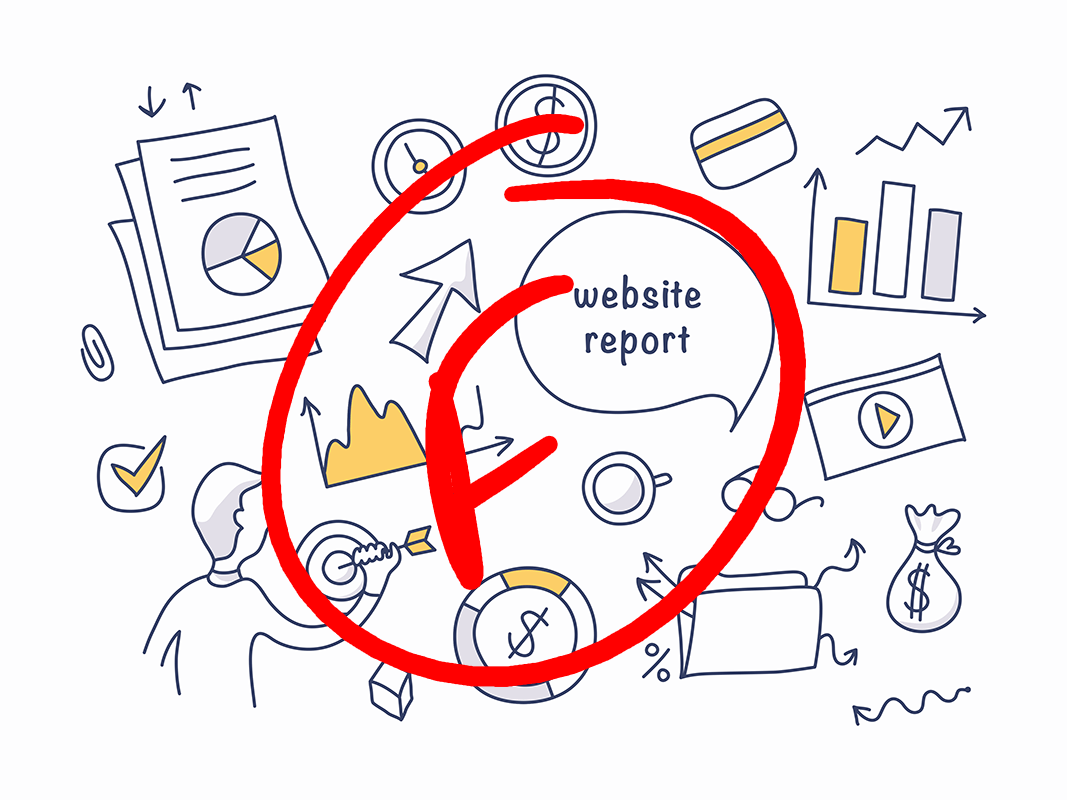Fix your reports
Find out what you're doing wrong when sending reports and how to fix it

Do you ever send email reports to colleagues where you've pulled together data from various systems and summarised it for management and the wider team? Do you receive email reports from your team? Let me tell you the biggest mistake I've experienced time and time again.
You see, this is quite a frequent occurrence in my experience. Maybe it's the results of the last month's PPC campaigns or organic search performance update. Maybe you're publishing blog posts and sharing what impact it's having. Or it could be a report pulled out of Google Analytics looking at e-commerce conversion rates and revenue for a sales period.
More often than not, these reports give a warm fuzzy feeling whether something is good, or something is bad. But when you stop and look, you'll discover there is a fundamental flaw with these report.
An example report
Let's take an example. You're comparing this month's Google Analytics figures to last month's for your e-commerce store. You may have the following figures:
Revenue:
£1,323,222 (up from £1,192,331) +11%E-commerce
Conversion Rate: 2.8% (down from 3.1%) -9.7%Average Order Value
Value: £168 (up from £145) + 15.6%
On the face of it, these figures look great, you're 11% up on revenue and better for average order value. Conversion rate is down though, but that's okay, we're making it up in revenue.
And that's it. Maybe a congratulatory "well done team" email from management and we all get on with our day.
The biggest flaw
The biggest flaw in this type of report is that there are no actionable insights. It's just reporting the data (which let's not forget that Google Analytics does that automatically). All we've done is used a human to be the notification of that data.
I would look at this data and immediately have questions.
- Was the increase in revenue seasonal or due to an external promotional push?
- Did any channels contribute to the extra revenue. For example, did we increase spend in PPC to generate the extra revenue which could be masking a downward trend in organic traffic?
- What caused the decrease in e-commerce conversion rate?
- If Average Order Value is up, is that because we are bundling more items per order, or did our customers buy a more expensive product?
The list of questions could go on, and results in a list of hypotheses that you need to prove or disprove. It's guesswork and we're not letting the data reveal the true story.
Report the cause not the symptoms
Every time I look at a report I ask myself, is this an actionable insight of the cause or is it just the symptom of the real insight? For a report to be great, it needs to do the following two things:
- Report on the cause, not the symptom
- Provide actionable insights about what we must do next or keep doing the same
It is critical to empower your team to dig into the data before reporting it. They should naturally be able to segment by channel and device to highlight any sub-trends that are occurring.
The 5-Whys principle
The 5-whys principle gives you the opportunity to really find the root cause. It's used in lean manufacturing to make sure the root cause of issues is identified and fixed, not just the symptoms are fixed. This prevents the same thing happening over and over.
Let's apply this to our example report:
E-commerce conversion rate is down 9.7%
Why?
Because our bounce rate has increased and customers are leaving
Why are they leaving?
Because we are seeing an increase in visitors that bounce on our product page, so the product page isn't good enough
Why is the product page not good enough?
It's happening on mobile, but not desktop and tablet, so the product page doesn't work as well on mobile
Why does it not work well on mobile?
Because the product image is below the fold
Why is the product image below the fold?
Because we launched a sales campaign with a big countdown banner at the top, pushing the product image down
As you can see, the data can drive a great narrative on where to find some actionable insight. In this example a product image could be the cause of an increase in bounce rate and thus a decrease in e-commerce conversion rate. This would have been masked because the cause was pushing revenue up due to the sales campaign.
Actionable insights
By performing the root cause analysis, you will discover some interesting questions along the way. In this example, it may be "does the product image below the fold impact conversion rate?"
Each report should then have a reasonable set of actionable insights that can be carried out in the next cycle. In this case it would be to propose an A/B test on the product image.
Report on the effect of last month's insights
Finally, these actionable insights should not be 'fire-and-forget'. You need to make sure the action taken was worth while. This may be improving things such as the conversion rate, or learning from your actions. The report should summarise the outcome of any previous actions and what impact they have had to the current report.
If you don't take action from the data, and you don't measure the impact of that action, then there is no point reporting on the data unless you just want to be a spectator and see what happens through natural causes.
What are your thoughts? Do you agree with this perspective or feel you have a better way to approach actionable data.

